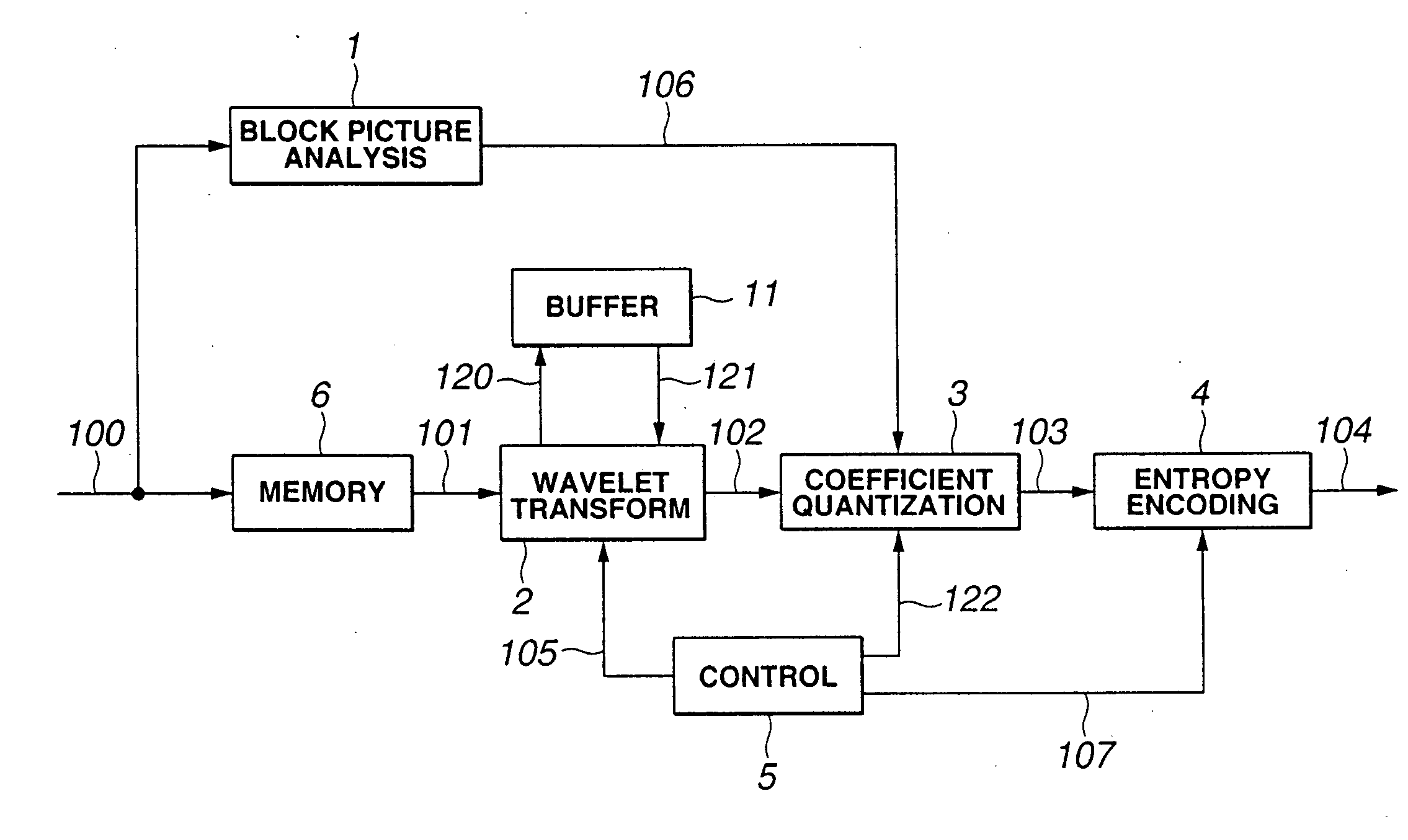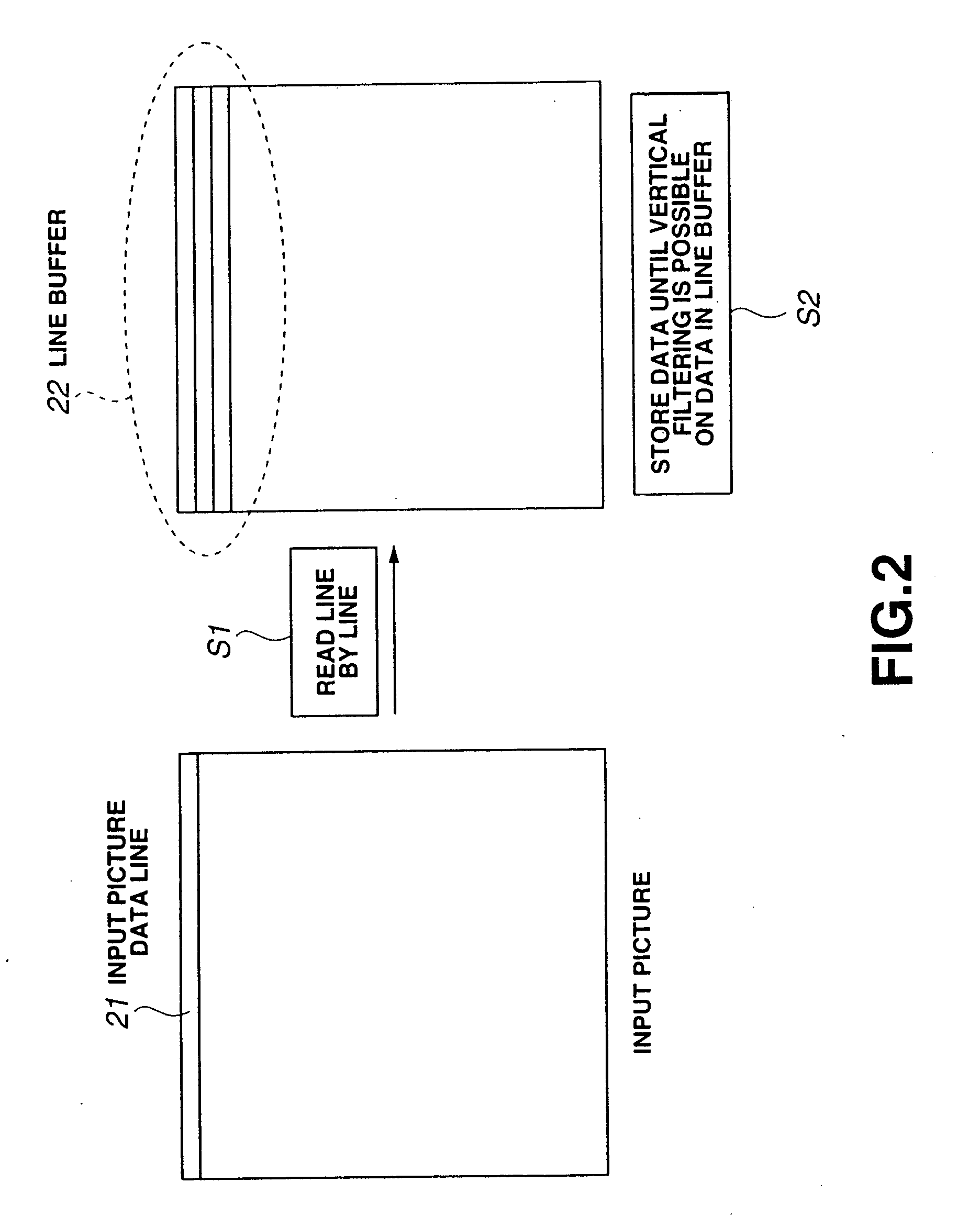Block area wavelet transform picture encoding apparatus
a wavelet transform and picture technology, applied in the field of picture encoding methods and apparatuses, can solve the problems of block distortion peculiar to dct, subjective deterioration, and the inability to perform fine control for each specified area of the picture, and achieve the effect of accurately enabling picture quality control
- Summary
- Abstract
- Description
- Claims
- Application Information
AI Technical Summary
Benefits of technology
Problems solved by technology
Method used
Image
Examples
second embodiment
[0070] A second embodiment of the present invention is now explained. In this second embodiment, the entropy encoding unit 4 shown in FIG. 1 is constructed so that the quantization coefficients in a block are arranged into a bit plane composed of binary data, arithmetic encoding is executed depending upon the occurrence probability distribution of the symbols of each sub-bit plane and the probability distribution is estimated only for data in a pre-set block.
[0071] Referring to FIG. 10, the bit plane is explained with reference to FIGS. 10a to 10c. FIG. 10a shows 4 vertical by 4 horizontal or 16 quantization coefficients, with +13, −6 and so forth indicating post-quantization coefficient values. These quantization coefficients are divided into absolute values and signs of plus and minus, with the absolute values being expanded into a bit plane from the MSB to the LSB. FIGS. 10b and 10c indicate bit planes of the absolute values and a bit plane of signs, respectively. The coefficien...
third embodiment
[0073] A picture encoding device, as a third embodiment of the present invention, is explained with reference to FIG. 11. The picture encoding device, shown in FIG. 11, is made up of a full picture memory unit 18 for storing the full picture of the input image, a full picture wavelet transform unit 7 for applying the wavelet transform filtering in the horizontal and vertical directions to the entire picture, a block coefficient extraction unit 8 for extracting wavelet transform coefficients corresponding to a specified block area forming a picture, a block coefficient quantizing unit 9 for quantizing the extracted wavelet transform coefficients, and an entropy encoding unit 4 for executing entropy encoding when the number of samples of generated quantization coefficients has reached a pre-set magnitude.
[0074] The first embodiment, already explained, differs from the third embodiment shown in FIG. 11 in that the first embodiment executes wavelet transform line by line, whereas the t...
fourth embodiment
[0081] The fourth embodiment of the present invention includes tile splitting means, upstream of the wavelet transform encoding unit, for splitting the input picture into plural rectangular tiles, and a downstream side encoding means for encoding picture data in each tile picture read out into a memory. An illustrative structure of the picture encoding device of the present fourth embodiment is shown in FIG. 12. The picture encoding device, shown in FIG. 12, is similar to the encoding device of FIG. 1 except that a tile splitting unit 10 is provided on the upstream side of the picture encoding device shown in FIG. 1. So, the encoding device, shown in FIG. 12, is not explained specifically.
[0082]FIG. 13 illustrates the operation of splitting the original picture into plural tiles and applying wavelet transform to each tile. In FIG. 13, solid lines indicate the boundaries of actual tiles and broken lines indicate the boundary of an area affected by wavelet transform filtering as late...
PUM
 Login to View More
Login to View More Abstract
Description
Claims
Application Information
 Login to View More
Login to View More - R&D
- Intellectual Property
- Life Sciences
- Materials
- Tech Scout
- Unparalleled Data Quality
- Higher Quality Content
- 60% Fewer Hallucinations
Browse by: Latest US Patents, China's latest patents, Technical Efficacy Thesaurus, Application Domain, Technology Topic, Popular Technical Reports.
© 2025 PatSnap. All rights reserved.Legal|Privacy policy|Modern Slavery Act Transparency Statement|Sitemap|About US| Contact US: help@patsnap.com



